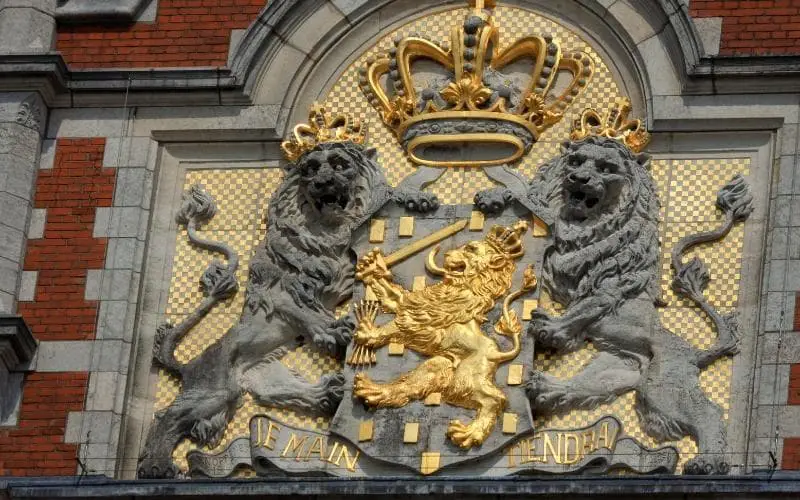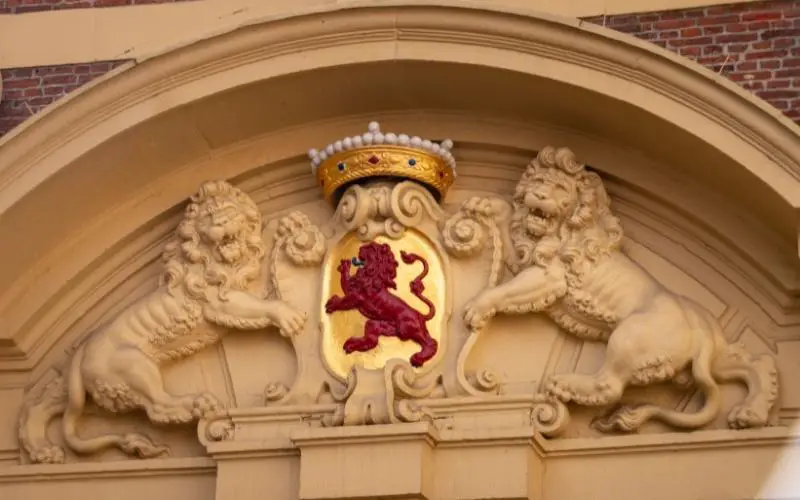

Almost all countries have one: a national animal. Most often, they're used to symbolize something unique about that country. Everyone knows the national animal of some countries, but what is the national animal of the Netherlands?
The lion is the national animal of the Netherlands. The animal symbolizes the Netherlands and appears on the coat of arms. In addition, the national soccer team carries the nickname, the orange lions.
As a dutchman, I can assure you that there do not live any wild lions in the Netherlands. So, how did such an exotic animal become the national animal of the Netherlands? And what's its significance?
To fully understand the national animal of the Netherlands, we need to dive into Dutch history. During the 16th century, the Spanish empire tried to conquer as much land as possible.
The Spanish also attempted to conquer the Netherlands. Being a very catholic country, Spain also tried to convert all areas they conquered to strictly catholic countries.
The Netherlands was predominantly protestant, though, and was relatively open to many other religions. This, and many other reasons, caused the Dutch to revolt against the Spanish regime.
All this caused the beginning of the 80-year war.
During this period, the Dutch managed to become the most powerful country of their time. In an effort to keep the Dutch compliant, the Spanish gave them a fair amount of freedom.
The Dutch united the until then independent provinces into one alliance, and together they fought the Spanish. In 1648 the Dutch finally won, and a new country was born, The Republic of the Seven United Netherlands.
But what has this to do with the national animal of the Netherlands?
During the war, one very influential figure has indirectly caused the lion to become the Dutch national animal. His name was Willem van Oranje-Nassau, he is one of the most famous Dutch historical figures.
He was a nobleman originating from the German area of Nassau, residing in the Netherlands. He was the duke of a French area named Orange.
The coat of arms of the family of Nassau has included two lions from the 12th century onward, as the lion has always been a symbol of courage of power in European folklore.
When Willem van Oranje became the leader of the Dutch resistance against the Spanish occupation, the lion became a symbol of the entire resistance.
The lion also started to carry a sword and a bow to symbolize the battle against the Spanish. The lion was used to inspire courage.
After the war ended, the Dutch continued to use the lion on their coat of arms, honoring Willem van Oranje and the ones that fought at his side for Dutch freedom.
The lion remained on the Dutch coat of arms and became an important part of the Dutch identity, such an important part that it became the Dutch national animal.

There are still quite some parts of Dutch society where the Dutch lion plays a significant role.
One of the most prevalent is football (or soccer, as Americans like to call it).
The lion often appears as a symbol of the Dutch team. It has always been a part of the tenue of the Dutch team, and in 2020 the Dutch national team got their shirts redesigned by Nike, showing the lion more than ever.
The symbolic value of the lion is also useful in a competitive environment. The lion is a symbol of power, courage, and resilience.
As the Dutch football player, Virgil van Dijk put it:
"We need the mentality of a lion to be successful, and we shall show everyone how proud and powerful we are!"
The lion even features in some football chants, even further cementing its place in Dutch football culture.
Because the Dutch lion has been a symbol of the Netherlands for a long time, it has also gotten an official status for use by the government.
Three Dutch lions are featured in the Dutch coat of arms.
Coats of arms have their roots in a long-lasting European history. They might look quite similar, but each country has its own unique design.
The Dutch coat of arms consists of three lions. The one in the middle holds a sword and some arrows, making it nearly identical to the lion featured on the coat of arms during the 80 years' war.
On top of the crest lies a crown, symbolizing the Dutch monarchy.
Although most countries do not use their coat of arms that often, it is encountered almost daily in the Netherlands.
This has to do with the fact that the coat of arms has become the official mark of the Dutch government.
All government buildings, letters sent by the government, and websites feature a stylized version of the coat of arms.
The original design is still featured on the cover of all Dutch passports.
A lesser-known use of the Dutch national animal is the "Leo Belgicus." This translates from Latin to "The Belgian Lion."
The Leo Belgicus refers to a type of cartography that used to be quite popular in the 16th century.
This practice involved drawing a map of the low countries (a historical name for the Netherlands, Belgium, and Luxemburg) in the shape of a lion.
This style of cartography was first used by the Austrian cartographer Michaël Eytzinger in 1583.
Drawing the map in this way made it more interesting to look at, but it also has a deeper meaning.
As mentioned before, the lion was a symbol of the Dutch revolt against the Spanish regime. Used by Willem van Oranje, it was often used to inspire courage in those fighting for Dutch independence.
Drawing a map of this area in shape further manifests this idea of a small country courageously and resiliently fighting.
But then, why would it be called the Belgian lion?
Well, the Netherlands and Belgium had been one country for quite some time. They lay together in one cultural spectrum, (mostly) speak the same language, and have been interconnected in many other ways.
The name Belgium came from the tribe named the "Belgae" that lived there during ancient times and later became synonymous with the entire area of Belgium, the Netherlands, and Luxemburg.
After the Belgian independence, the name resembled just this one country.
As you can see, the Dutch national animal has a long history rooted in many different aspects of the Dutch story, from the 80 years' war to some cartographers in Austria. But the symbol has not yet disappeared.
On the contrary, the Dutch lion is a symbol widely used in many parts of modern society. History never ends, and the Dutch lion is just another example of how every part of it is interconnected.